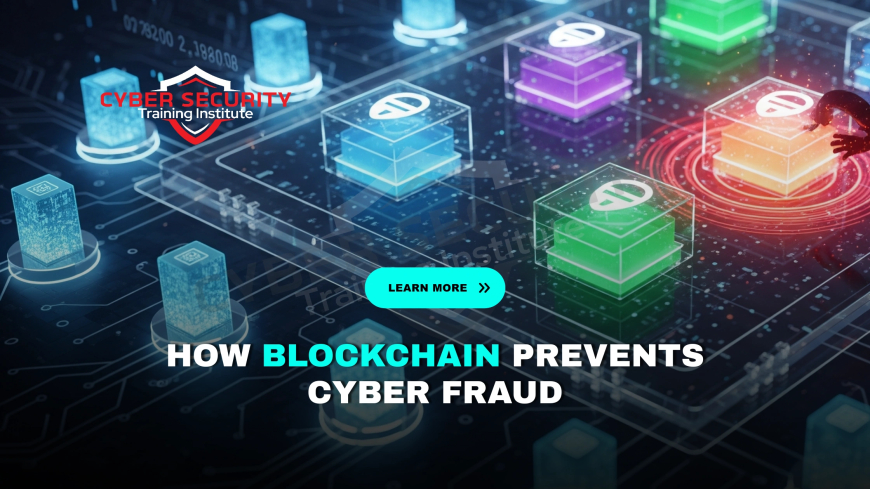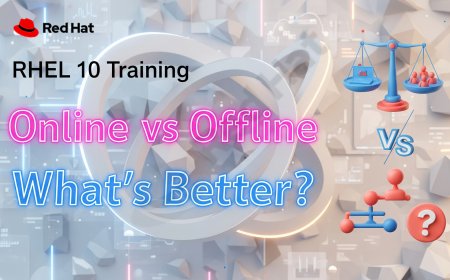How Does Blockchain Help in Preventing Cyber Fraud?
Imagine waking up to find your bank account drained, your personal details sold on the dark web, or your company's sensitive data held for ransom. This isn't just a nightmare—it's the reality of cyber fraud, which is projected to cost the world a staggering $10.5 trillion annually by 2025. As someone who's followed tech trends for years, I've seen how traditional security measures often fall short against sophisticated hackers. But there's a game-changer on the horizon: blockchain technology. Originally known for powering cryptocurrencies like Bitcoin, blockchain is now emerging as a powerful tool to combat fraud. It offers a way to make transactions tamper-proof, transparent, and secure without relying on a single authority. In this post, we'll explore how blockchain works its magic against cyber threats, with simple explanations, real examples, and practical insights. Whether you're a business owner worried about scams or just curious about the future of online security, stick around—you might just discover why blockchain could be the shield we've all been waiting for.

Table of Contents
- What is Cyber Fraud?
- The Basics of Blockchain Technology
- Key Features of Blockchain That Prevent Fraud
- Real-World Applications in Different Sectors
- Case Studies and Examples
- Challenges and Limitations
- Future Trends in Blockchain for Cybersecurity
- Comparing Blockchain to Traditional Methods
- Conclusion
- FAQs
What is Cyber Fraud?
Before we dive into solutions, let's understand the problem. Cyber fraud refers to any deceptive activity conducted online to steal money, data, or resources. It's like digital pickpocketing, but on a massive scale. Common types include phishing—where scammers trick you into revealing passwords via fake emails—identity theft, where your personal info is used to open accounts in your name, and ransomware, which locks your files until you pay up.
In 2024 alone, the FBI received over 800,000 complaints about internet crimes, with losses exceeding $12.5 billion. That's a huge jump from previous years, and experts predict it will climb higher in 2025 as AI makes scams more convincing. Businesses are hit hard too—think supply chain fraud where fake invoices slip through, or financial scams draining company funds. The issue? Traditional systems rely on centralized databases, which are like big targets for hackers. One breach, and everything's compromised. This is where blockchain steps in, flipping the script by distributing control and adding layers of protection.
Cyber fraud doesn't just hurt wallets; it erodes trust. When a bank gets hacked, customers flee. In healthcare, stolen records can lead to blackmail. Even governments face threats, with election interference or welfare fraud. Understanding these risks makes it clear why we need innovative defenses like blockchain, which isn't just hype—it's a practical tool being adopted worldwide.
The Basics of Blockchain Technology
If you're new to blockchain, don't worry—it's simpler than it sounds. At its core, blockchain is a digital ledger, like a shared notebook where everyone can write but no one can erase. Instead of one central authority (like a bank) controlling the records, blockchain spreads them across a network of computers, called nodes.
Here's how it works: Transactions are grouped into "blocks," each linked to the previous one with cryptographic hashes—fancy codes that act like fingerprints. Once a block is added, changing it would require altering every subsequent block, which is nearly impossible without consensus from the network. This setup was invented for Bitcoin in 2008, but now it's used far beyond crypto.
Key terms to know: Decentralization means no single boss; immutability means records are permanent; transparency lets everyone verify transactions. Unlike traditional databases that can be hacked and altered quietly, blockchain shouts if something's wrong. It's like having a tamper-evident seal on every piece of data. For beginners, think of it as a super-secure Google Doc where edits need group approval and history is unchangeable.
Blockchain isn't perfect—it's energy-intensive for some types—but for fraud prevention, its strengths shine. As we'll see, these basics form the foundation for battling cyber threats effectively.
Key Features of Blockchain That Prevent Fraud
Now, let's break down why blockchain is a fraud fighter. Its features aren't just buzzwords; they directly counter common cyber attacks.
First, immutability: Once data hits the blockchain, it's set in stone. Hackers can't retroactively change transaction details without detection, preventing things like invoice fraud or record tampering. Imagine a supply chain where every shipment is logged permanently—no more faking origins.
Decentralization is another biggie. Traditional systems have a single point of failure—if hackers breach the main server, game over. Blockchain distributes data across thousands of nodes, so compromising one doesn't ruin the whole thing. This makes DDoS attacks (flooding a site to crash it) less effective.
Transparency with privacy: Everyone sees the ledger, but personal details can be encrypted. This allows auditing without exposing sensitive info, spotting fraud patterns early. For example, banks can verify transactions without sharing customer secrets.
Smart contracts: These are self-executing codes that automate agreements. If conditions aren't met, the deal doesn't go through—no room for scams. Think insurance claims paid only if verified automatically.
Cryptographic security: Using advanced math, blockchain ensures only authorized users access data. Digital signatures prove identity without passwords, reducing phishing risks. Combined, these features create a robust barrier against fraud, making blockchain a go-to for secure systems.
Real-World Applications in Different Sectors
Blockchain isn't theoretical—it's being used today across industries to thwart fraud.
In finance, it's revolutionizing payments. Traditional wire transfers can be faked, but blockchain-based systems like Ripple ensure instant, verifiable transactions. This cuts down on money laundering and unauthorized transfers.
Supply chains benefit hugely. Companies like IBM use blockchain to track products from farm to table, preventing counterfeit goods. Each step is timestamped, so fraud like duplicate invoices is impossible.
Healthcare: Patient records on blockchain prevent unauthorized access and falsification. It ensures only doctors see your history, reducing medical fraud.
Identity management: Decentralized IDs let you control your data, stopping identity theft. Platforms like SelfKey use blockchain for secure verification without central databases.
Government: Voting systems on blockchain could end election fraud by making votes immutable and verifiable. Estonia's e-governance incorporates similar tech. These applications show blockchain's versatility in plugging fraud holes.
Case Studies and Examples
To make this real, let's look at success stories. In 2025, TRM Labs uses blockchain analytics to map fraud networks, helping platforms like exchanges spot scams before they escalate. They've prevented millions in losses by identifying connected scammer addresses.
Elliptic's tools detected crypto scams in 2025, using blockchain transparency to trace illicit funds. One case involved freezing $300,000 in scam-linked crypto.
In supply chains, Walmart's blockchain pilot reduced food tracing time from days to seconds, preventing fraud in recalls. Financially, JPMorgan's Onyx platform processes billions securely, minimizing fraud risks.
Even in insurance, Allianz explores blockchain for fraud detection in claims. These examples prove blockchain's practical impact, saving time and money while boosting trust.
Challenges and Limitations
Blockchain isn't a silver bullet. Scalability issues mean some networks handle few transactions per second, slowing adoption. Energy use, especially for proof-of-work, raises environmental concerns.
Regulatory hurdles vary by country, complicating global use. Integration with old systems is tricky and costly. Security risks like 51% attacks—where one group controls the network—exist, though rare.
User error, like lost keys, can lock out data forever. Privacy balances are hard—too transparent, and sensitive info leaks. Despite these, advancements like proof-of-stake address many issues, making blockchain viable for fraud prevention.
Future Trends in Blockchain for Cybersecurity
Looking to 2025 and beyond, blockchain will evolve. AI integration will enhance fraud detection, analyzing patterns on the ledger in real-time.
Zero-knowledge proofs allow verification without revealing data, boosting privacy. Quantum-resistant cryptography will counter future threats.
More governments will adopt, like Illinois' crypto scam protections. In cybersecurity, blockchain will secure IoT devices, preventing botnets. The future looks bright, with blockchain becoming standard for fraud-proof systems.
Comparing Blockchain to Traditional Methods
To highlight differences, here's a table:
| Aspect | Traditional Systems | Blockchain |
|---|---|---|
| Centralization | Single point of control, easy to hack | Decentralized, resilient to attacks |
| Data Alteration | Possible with access | Immutable, changes detected |
| Transparency | Limited, prone to hidden fraud | Full visibility, fraud spotted early |
| Cost | High fraud recovery costs | Lower long-term due to prevention |
This comparison shows blockchain's edge in security.
Conclusion
We've journeyed through how blockchain tackles cyber fraud, from its immutable ledger to real-world wins in finance and supply chains. With fraud costs soaring to trillions, blockchain's decentralization, transparency, and smart features offer a solid defense. Sure, challenges like scalability exist, but trends like AI integration promise even stronger protection. Ultimately, adopting blockchain isn't just tech-savvy—it's essential for building trust in our digital world. If you're in business or just online, consider how this tech can safeguard you. The future is fraud-resistant, and blockchain is leading the charge.
FAQs
What is blockchain in simple terms?
Blockchain is a shared digital record book that's secure and can't be easily changed, used for tracking transactions without a central authority.
How does immutability help prevent fraud?
Immutability means once data is recorded, it can't be altered, stopping hackers from faking or changing records undetected.
Can blockchain stop phishing attacks?
While not directly, its cryptographic identities reduce reliance on passwords, making phishing less effective.
What's a smart contract?
A smart contract is code that automatically executes agreements when conditions are met, reducing manual fraud risks.
Is blockchain only for cryptocurrency?
No, it's used in supply chains, healthcare, and more for secure data handling.
How does decentralization fight cyber fraud?
By spreading data across many nodes, it eliminates single hack points, making systems harder to compromise.
Are there real examples of blockchain preventing fraud?
Yes, like TRM Labs using it to detect scam networks in crypto.
What are the downsides of blockchain for security?
Issues include high energy use and scalability, but solutions are emerging.
How does blockchain improve transparency?
It lets all participants view transactions, spotting irregularities quickly.
Can small businesses use blockchain?
Absolutely, affordable platforms make it accessible for fraud prevention.
What's the role of AI in blockchain fraud detection?
AI analyzes blockchain data for patterns, enhancing real-time fraud spotting.
Does blockchain protect against ransomware?
Indirectly, by securing backups and data integrity, making recovery easier.
How is blockchain used in identity verification?
It creates decentralized IDs, letting users control their data without central risks.
What's a 51% attack?
When one group controls over half the network, potentially allowing fraud, but rare in big chains.
Can blockchain reduce supply chain fraud?
Yes, by tracking goods transparently from source to end.
How much does cyber fraud cost globally?
It's expected to reach $10.5 trillion by 2025.
Is blockchain regulated?
Regulations vary, but governments are increasingly supporting it for security.
What future trends involve blockchain and cybersecurity?
Quantum-resistant tech and more IoT integrations for better protection.
Does blockchain use encryption?
Yes, heavily, to secure data and transactions.
Why should companies adopt blockchain now?
To stay ahead of rising fraud threats and build customer trust.
```
What's Your Reaction?
 Like
0
Like
0
 Dislike
0
Dislike
0
 Love
0
Love
0
 Funny
0
Funny
0
 Angry
0
Angry
0
 Sad
0
Sad
0
 Wow
0
Wow
0














